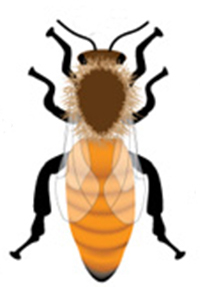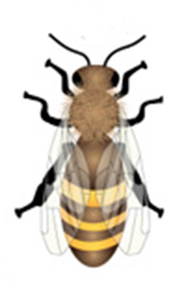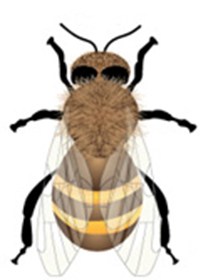Honeybees
At Long Meadow Ranch, we believe honeybees are an integral part of a sustainable farm. Full circle farming utilizes all parts of the ranch to maintain the health of the whole. The crops at our Rutherford Estate are pollinated by the honeybees we have on property, plus we get to enjoy the honey these amazing creatures make.
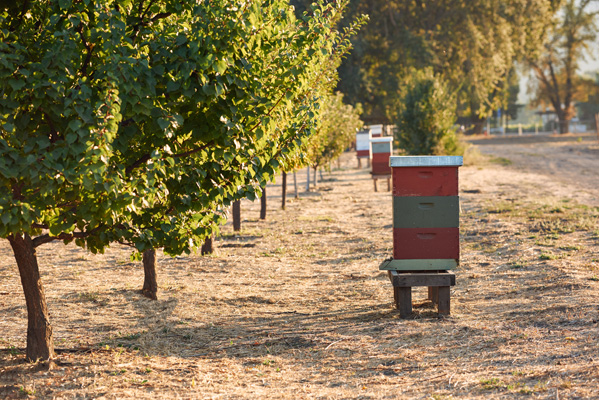
We have 10 colonies at our Rutherford Estate, each with three kinds of honeybees: a queen, workers and drones.
Let’s start with the queen, as she is the largest and most important bee in the hive–she produces all of the progeny. There is only one queen per colony and her only job is to lay eggs. She can lay up to 2,000 eggs per day during peak season!
Next up, we have the worker bees. They are infertile female bees that make up the majority of the colony’s population and keep the hive going. Worker bee jobs change depending on where they are in their lifespan. Jobs include cleaning the hive, taking care of the larvae (nurse bee) protecting and feeding the queen, collecting nectar and pollen, making honey and wax, and guarding the hive.
And finally, we have the drones. All male, drones are the bees that come from unfertilized eggs. There are at least 100 drones per hive and they are kicked out by worker bees in the fall. They have larger eyes than the queen and worker bees, their bodies are larger and broader and they live longer than workers, and they are the only honeybees that do not have a stinger. Drones carry all of the genetic material for the hive. Their job is to build morale before they leave the hive and mate with virgin queen bees.
Beekeepers (ours is the uber-talented Rob Keller) use smoke on their hands and arms to calm the bees when entering a hive. The smoke masks alarm pheromones released by guard (worker) bees, creating an opportunity for the beekeeper to open the hive and work relatively safely.
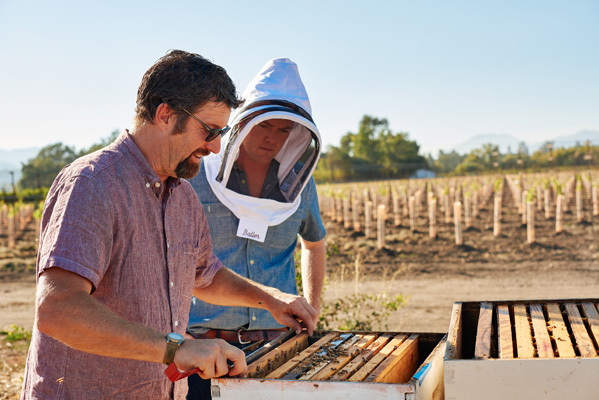
There are more than 2,500 native pollinators in California, but only the honeybee genus (apis) produces wax. Worker bees produce wax from four sets of glands in their lower abdomen. The wax scales are passed from the abdomen forward to the front legs, then into the bee’s mouth. The bee then uses its powerful mandibles to masticate the wax for building the comb. The hexagonal shape of the comb is vital to the success of the hive, as it is used for rearing the brood and storing pollen and honey. The size of the cells determine the sex of the egg the queen lays inside the cell (drone or worker). It takes approximately 1 pound of honey to create 1 ounce of wax!
The forager worker bees fly around a 4-mile radius to collect sugary nectar (50% water) from flower blossoms to bring back to the hive. When their honey stomachs (they have a food stomach, as well) are full, they return to the hive to share the nectar with the other worker bees. They pass the nectar from bee to bee. The heat from this activity activates the enzymes that turn the nectar into honey. After it’s fully processed, the wet honey is transferred into one of the cells, which acts like a jar. To dry the honey, the worker bees fan it with their wings, until it becomes the sticky honey we know and love (18% water). At this point, the bees cap the cell with wax to keep it clean.
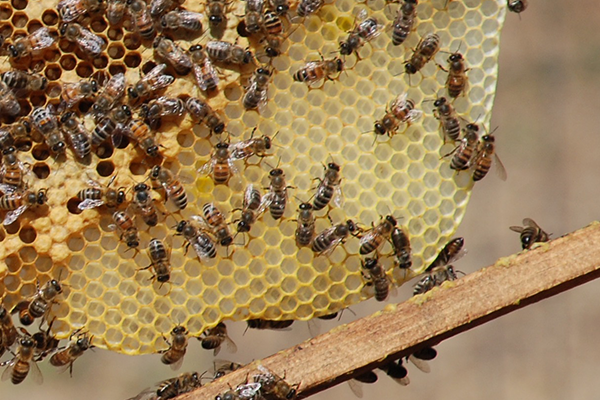
Each time Rob visits our hives, he not only checks the frames, but he is looking for any signs of unusual activity or disease, as well as the various pollens the workers have collected. He does this by reading the monitoring tray that sits below a screen under each hive. Particles fall onto the monitoring trays, often mirroring the lines of the frames. These particles tell the story of the hive.
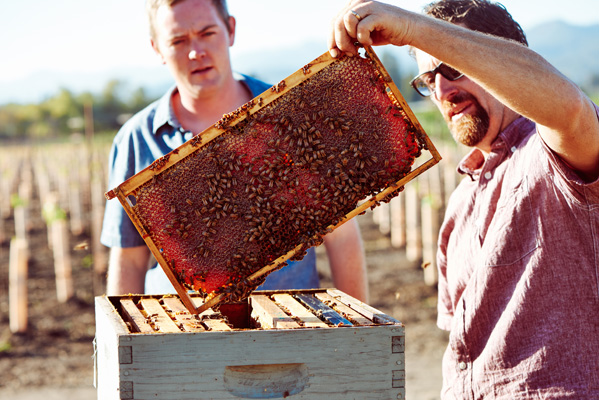
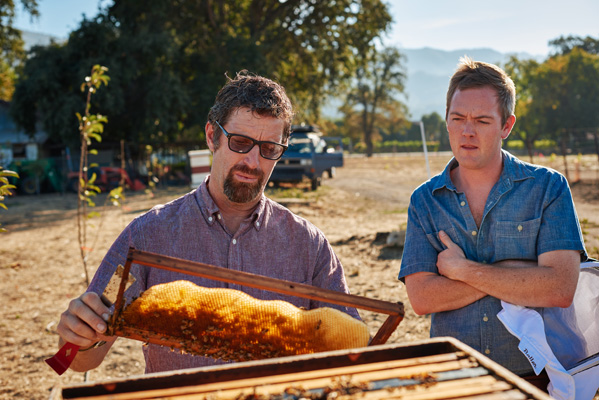
Rob takes meticulous notes each visit and smears a little bit of the various pollens he collects, so we can track the differences through the seasons. Someday, we (the collective we) hope to be able to see where bees are actually foraging by studying the pollen they bring back to the hive.
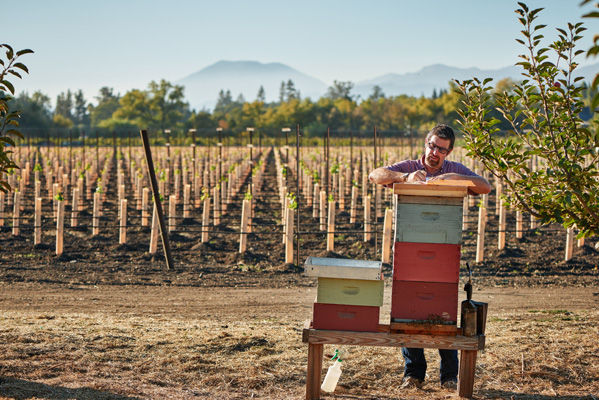

Now for the part we all patiently await–the honey! Once 80+% of the comb has been capped, we can pull the frame and process the honey. We often keep the beautiful frames for events at our restaurant at Farmstead, but we extract most of the honey from the comb to produce the sticky, sweet, delectable stuff you can find at our farmer’s market and general store.
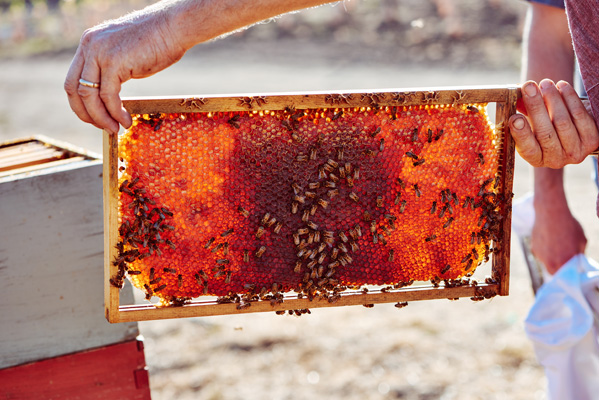
Rob uses a small basket press lined with a mesh cloth bag to extract the honey from the comb.
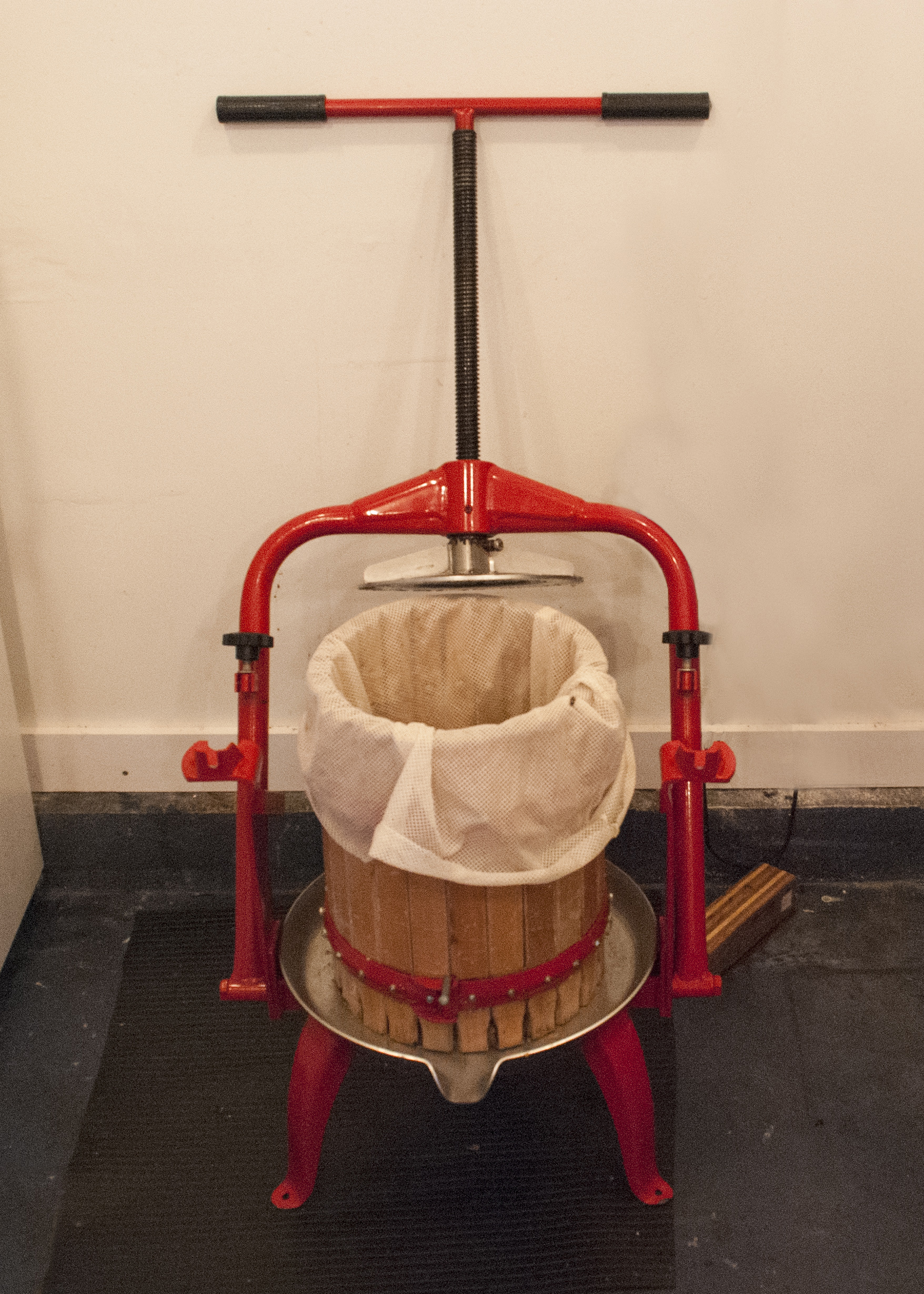
He then breaks up the comb and puts it into the mesh bag inside the basket of the press.
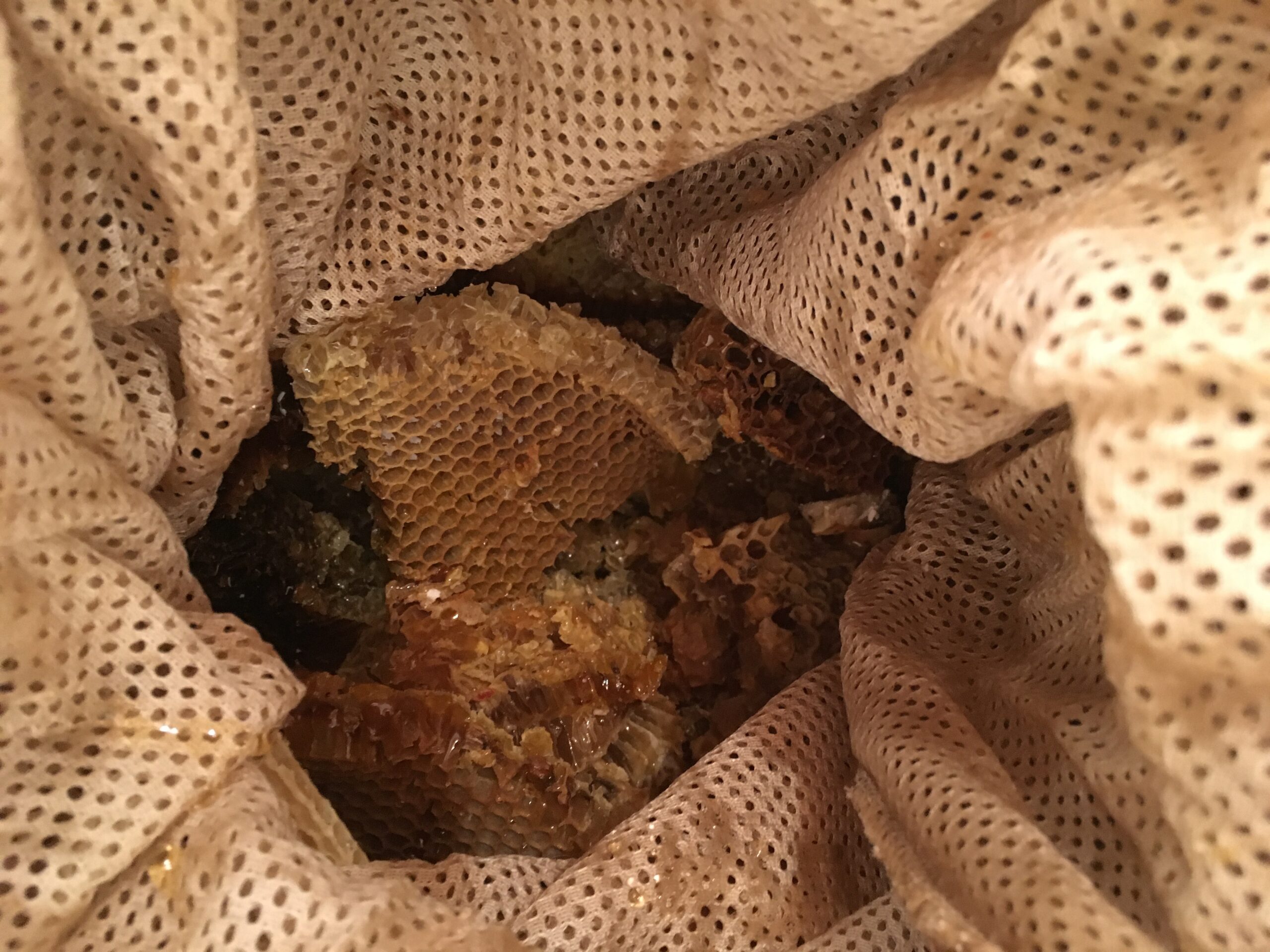
Next, he spins the handle at the top of the press, pushing the metal plate down into the basket, gently compacting the comb and extracting the honey.
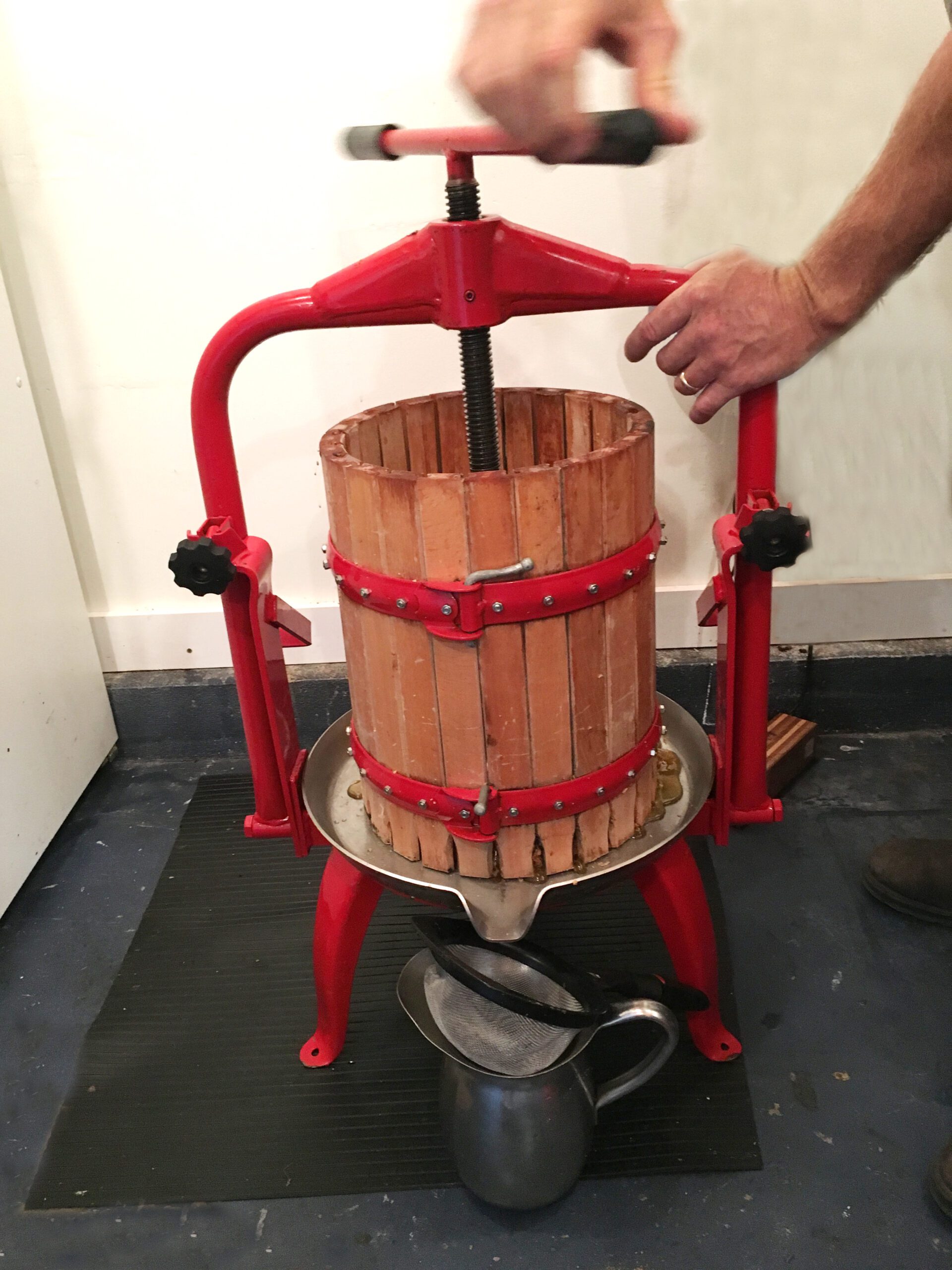
The honey comes out into the tray and funnels through a fine mesh sieve to make sure no particles other than honey make it into the final product.
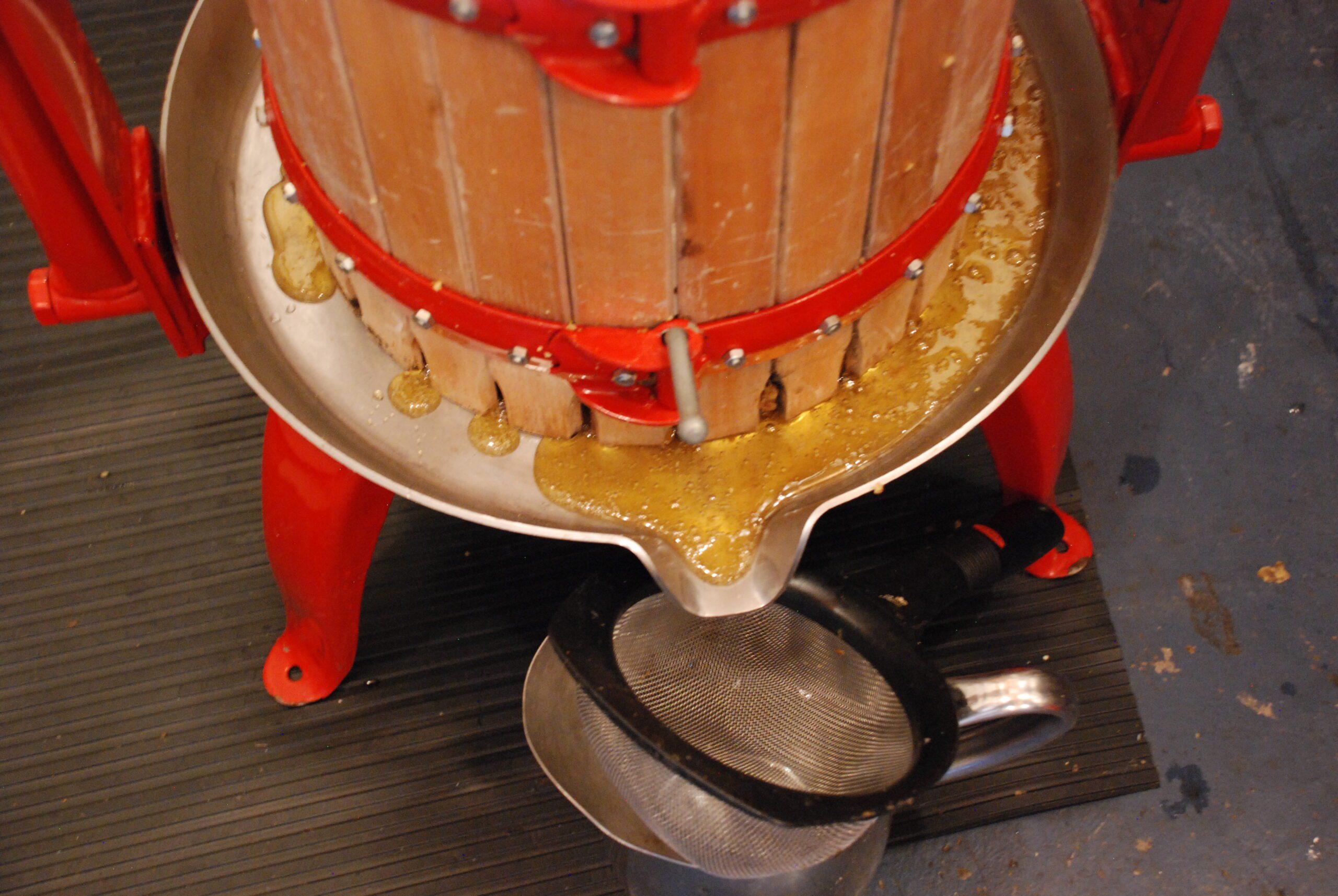
There are a hundred and one ways to use the remarkable, sticky, golden substance (cough “medicine,” allergy symptom reducer, eliminating dandruff, and, of course, in your morning cup of coffee and with peanut butter on toast). The blend of sugar, trace enzymes, minerals, vitamins, and amino acids is unlike any other sweetener on the planet and it’s finger licking good!

